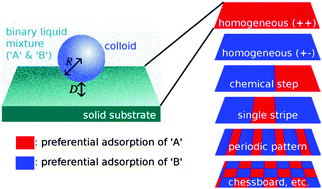Critical Casimir forces steered by patterned substrates†
Abstract
Among the various kinds of effective forces in soft matter, the spatial range and the direction of the so-called critical Casimir force—which is generated by the enhanced thermal fluctuations close to a continuous phase transition—can be controlled and reversibly modified to an uncommonly large extent. In particular, minute temperature changes of the fluid

- This article is part of the themed collection: International Soft Matter Conference 2010

 Please wait while we load your content...
Please wait while we load your content...